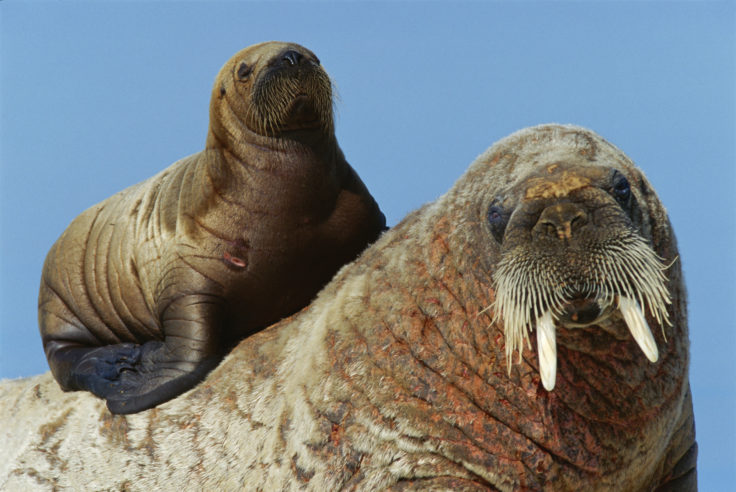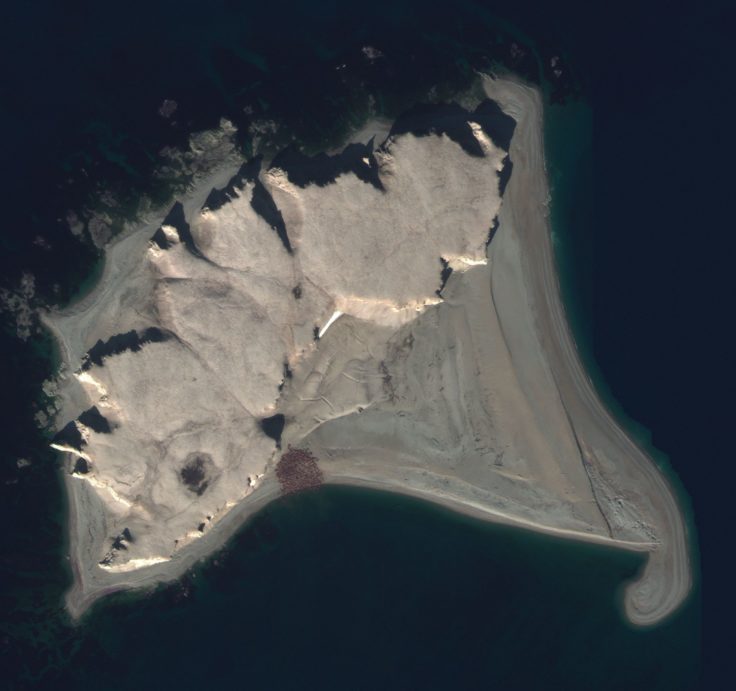This week (17 January) British Antarctic Survey (BAS) and WWF are inviting the public to become 'walrus detectives' and get involved in their Walrus from Space project to help with vital research to enable a better understanding of these Arctic marine mammals.
Walrus are facing the consequences of the climate crisis and we need to know more about how they are affected. 'Walrus Detectives' help contribute to conservation science by searching for walrus in thousands of satellite images collected by space technology and intelligence company Maxar Technologies. The images found to contain walrus from the first year have been reloaded into the citizen science platform and the 'detectives' are now invited to count the walrus in those images to contribute to population data. The 'counting phase' comprises walrus haul-outs imaged in 2021, and will be open for three weeks from 17 January to 7 February 2023.

The five-year project, in cooperation with scientists from around the Arctic, aims to deliver a whole population census of the Atlantic and Laptev Walrus using satellite imagery and explore what might happen to them in the context of rapid climate change. This will help scientists better understand the impact of climate change on populations of this iconic species and help safeguard their future.
The WWF and BAS science teams visited beaches where walrus haul out in Svalbard in the Norwegian Arctic last summer (read here). Despite it being a successful trip to help calibrate and
validate satellite imagery counts of the walrus, the team also saw first-hand how real the threats of climate change are in Svalbard. This region of the northern Barents Sea is warming faster than elsewhere in the Arctic and may be warming between 5-7 times the global average, making it the fastest warming region on Earth.
Hannah Cubaynes, Conservation Scientist for British Antarctic Survey was working in the Arctic last summer. She says:
"The Arctic is a vast and remote region, making it a difficult place for us to work, and we know that walrus can be very easily disturbed by human presence. So that is why we have teamed up with Maxar, a satellite imagery and data provider to collect images of walrus haulouts, before loading them onto the company's GeoHive platform. We are asking people at home to sign up to help us search for and later count walrus. But you don't have to travel to the ends of the Earth, you can do it from the comfort of your own home."

Rod Downie, Chief Polar Advisor for WWF-UK says:
"Walrus are big, powerful animals, but they are also increasingly vulnerable to the implications of the climate crisis, as the sea ice is literally melting out from underneath them. What we are trying to do – with the help of members of the public – is better understand walrus, how they are being affected by the climate crisis now and how they might respond in a climate altered future. We are doing this to provide evidence to support the conservation of the species across its range."
Alex Dunmire, Senior Director for Analytical Services at Maxar, says:
"Maxar's highresolution satellite imagery enables citizen scientists and researchers to see the walrus on the beach, and our GeoHive platform allows the public to engage directly with our imagery. Maxar is proud to support the efforts to safeguard walrus and their environment."
The benefits of using satellite imagery are that it is non-invasive and does not disturb the walrus. The counting survey will help to better understand future population trends of walrus,
which is currently not well known. With this vital research and the support of the public on the Walrus from Space project, scientists hope to discover more about the specific threats to this emblematic Arctic species and, as a result, help safeguard their future.
Aspiring conservationists can help protect the species by going to wwf.org.uk/walrusfromspace where they can register to participate, and then be guided through a training module before joining the walrus census.
Walrus facts:
• There are two agreed subspecies of walrus; the Atlantic walrus and the Pacific walrus. Laptev walrus may be the westernmost extent of the Pacific walrus, but they are treated separately for conservation and management purposes. The Walrus from Space project only focuses on Atlantic and Laptev walrus.
• Walrus are large animals. Females can weigh up to 900kg, and males can weight up to 1500kg - that's more than a Mini Cooper! Their tusks alone can weigh around 5kgs.
• Walrus are very social animals and will often be found bunched up closely together in large groups. Groups of walrus can be referred to as herds, huddles, or haul-outs.
• Did you know that walrus can change colour? While they mostly appear as a cinnamon brown, they can appear grey after diving or reddish brown when too warm as their bloody vessels dilate (much like a person's face will become red when they are too hot).
• Walrus have a very specific niche that not only limits their distribution, but makes them likely to return to the same site repeatedly. Walrus need large areas of shallow water with lots of bivalve food to eat, reliable open water over rich feeding areas, and nearby spots for haul-outs to rest.
• Although bivalves are the main food source of walrus, some bigger individuals will eat larger prey, including seals.
• Polar bears and orca attack walrus, mainly predating calves. The herd will band together to protect calves in the water and females will diligently defend their young.
• There are estimated to be more than 25,000 Atlantic walrus, with around 5,500 of these estimated to be found in Svalbard.






